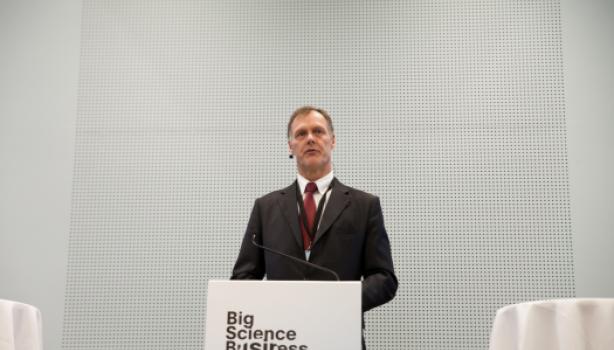The construction of the 5.5-m long 11T dipole prototype was completed in May this year after several years of intense work dedicated to the development and optimisation of the special tooling, and of the related manufacturing and inspection procedures. Most of the construction activities took place in the Large Magnet Facility in building 180 at CERN, with contributions from industry, namely Alstom Power Systems (FR), ASG Superconductors (IT), Babcock Noell (DE), and Oxford Instruments Nanotechnology Tools (UK).
The magnet is made of two apertures, as it aimed at replacing two LHC main dipoles in the dispersion suppressor regions of LHC, one on either side of IP7. The coils are made up of Nb3Sn conductor, hence necessitating reaction in an argon furnace at about 650°C for 150 hours in order to form the Nb3Sn superconductor. After this, the coils are impregnated with epoxy resin to form the cable insulation system. The prototype is currently on the test bench in building SM18 where it will be tested in the course of June-July in nominal operation conditions and further.
The prototype will be fully characterised in terms of quench behaviour, protection, field quality, stability and memory. In parallel with this, the collaring procedure has been refined within the framework of a dedicated task force initiated in the end of 2017. One of the two magnet models of 2-m length, MBHSP107, which is part of the task force deliverables, is almost finished; it will be tested at cold in July.
The results of the performance tests of both the full-length prototype and the model SP107 shall confirm the solid foundations of the project, when at the same time the series production has started in the Large Magnet Facility.


